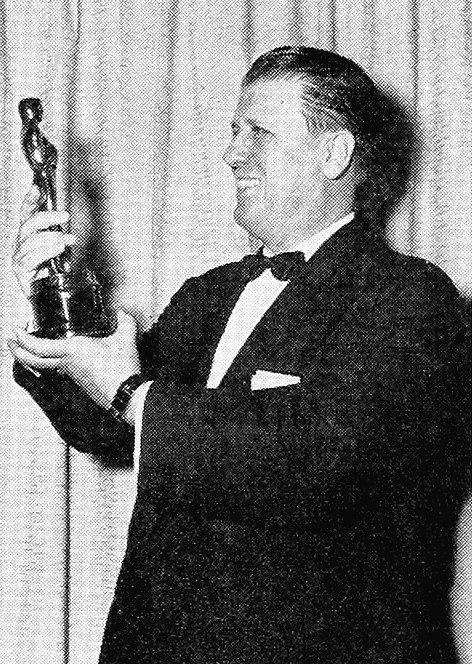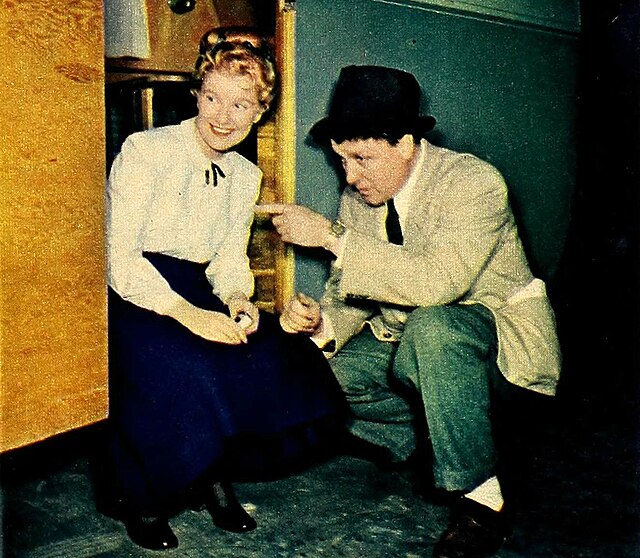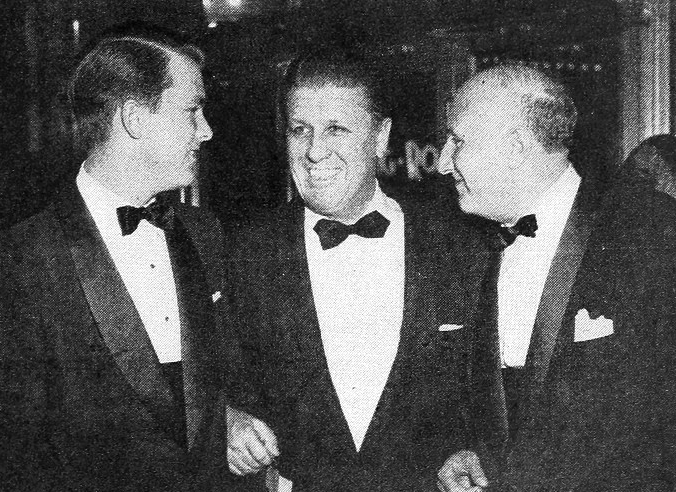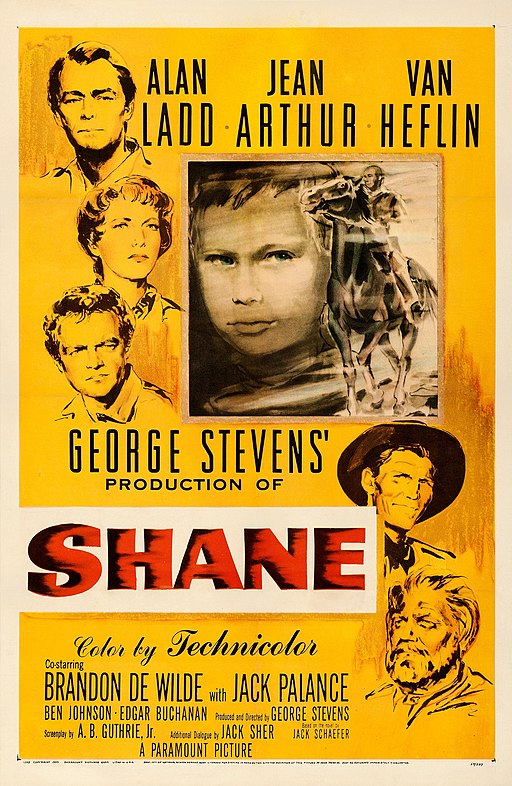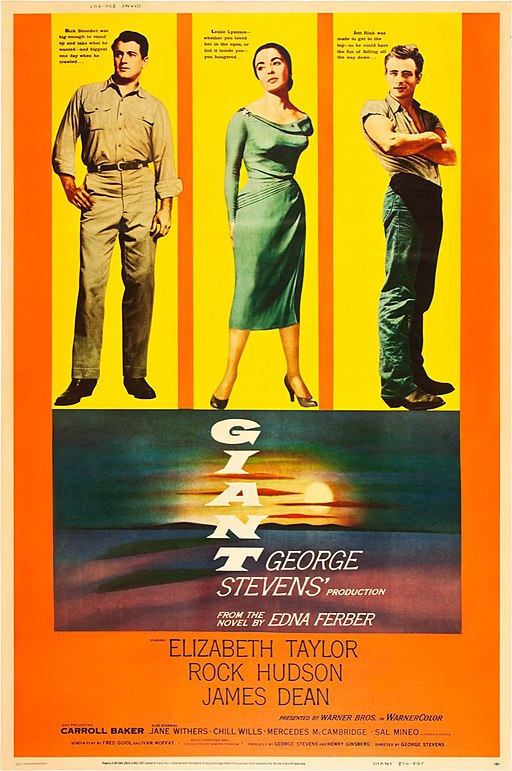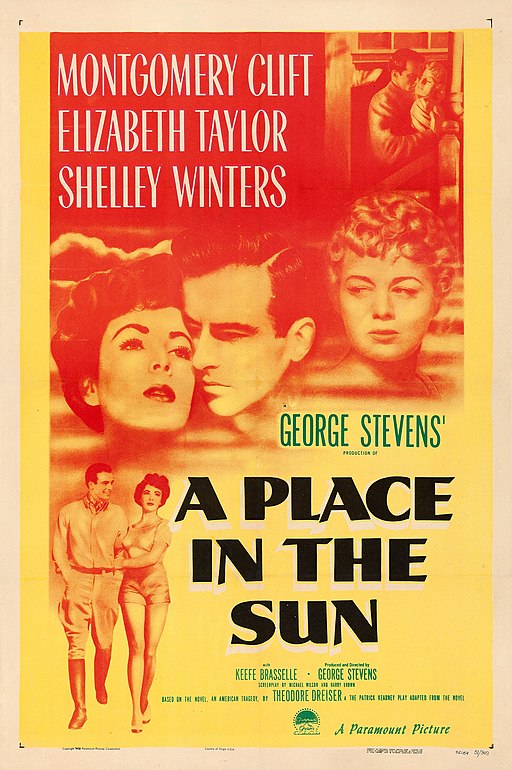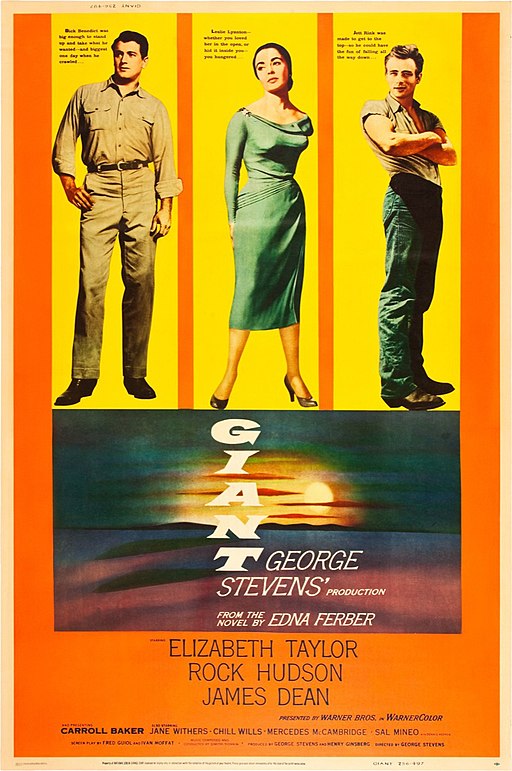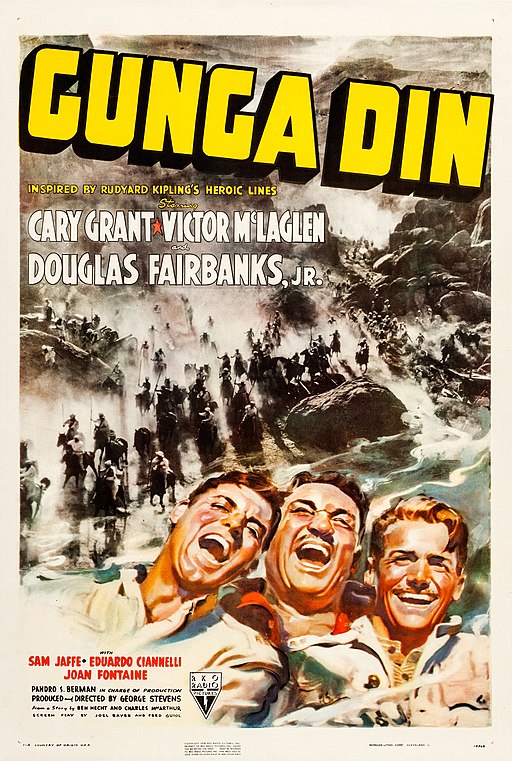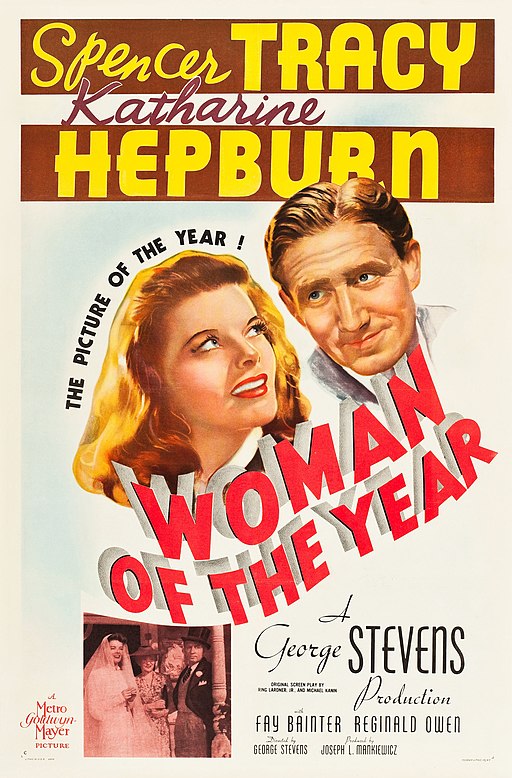George Stevens
back| Full Name | George Cooper Stevens |
| Born | December 18, 1904 |
| Birthplace | Oakland, California, U.S. |
| Died | March 8, 1975 |
| Buried | Forest Lawn Memorial Park, Hollywood Hills, California, U.S. |
| Married to | Yvonne Howell (m. 1930–1947), Joan McTavish (m. 1968–1975, his death) |
| Children | George Stevens Jr. |
| Notable films | A Place in the Sun - Shane - Giant - The Diary of Anne Frank |
George Stevens – The meticulous film director
George Stevens, born on December 18, 1904, in Oakland, California, emerged as one of Hollywood’s most revered directors, celebrated for his ability to traverse various genres with depth and innovation. Starting as a cameraman, he swiftly ascended to a director, creating iconic films that remain influential.
Stevens' early work in comedies, including the notable “Swing Time” (1936), showcased his knack for rhythm and character. However, his versatility shone as he transitioned to dramas and adventures. “Gunga Din” (1939) and “The More the Merrier” (1943) underscore his range, the latter earning him his first Oscar nomination.
His post-WWII films are particularly acclaimed. “A Place in the Sun” (1951) and “Giant” (1956) garnered him Best Director Oscars, while “Shane” (1953) offered a profound take on the Western genre. These films reflect Stevens' meticulous craftsmanship, attention to detail, and commitment to social issues.
Stevens' later works, including “The Diary of Anne Frank” (1959), solidified his reputation for tackling challenging themes with grace and humanity. His impact extended beyond the director’s chair, as he played a vital role in founding the American Film Institute.
Stevens took the time to fully understand and develop his characters, a practice that resulted in profound and memorable cinematic experiences. His meticulous nature extended to every aspect of filmmaking, from pre-production research to post-production editing.
Related
George Stevens – Biography, all his movies and analysis of his style of direction
George Cooper Stevens was an acclaimed American film director, producer, screenwriter, and cinematographer, born on December 18, 1904, in Oakland, California. He grew up in a showbiz family; his father was a stage actor, and his family eventually moved to Hollywood.
Stevens started his career in Hollywood as a cameraman, working on Laurel and Hardy shorts. His talent was quickly recognized, and he moved up the ranks to become a director. In the 1930s, he directed a series of successful screwball comedies including "Swing Time" (1936) and "Vivacious Lady" (1938).
Stevens served in World War II, creating films for the U.S. Army Signal Corps. His experience filming the liberation of Dachau concentration camp had a profound impact on him and would influence his later work.
Post-war, Stevens’ style shifted to more serious and dramatic themes. He won the Academy Award for Best Director for "A Place in the Sun" (1951), a dark tale of ambition and doomed love, and "Giant" (1956), an epic drama exploring wealth, race, and class in Texas.
"Shane" (1953) remains one of his most celebrated films, a quintessential Western with deep emotional resonance. Stevens tackled the harrowing story of "The Diary of Anne Frank" (1959), earning another Oscar nomination.
Stevens was known for his meticulous attention to detail, his ability to draw deep performances from actors, and his commitment to exploring complex social issues. His films often dealt with themes of personal integrity, moral dilemmas, and the complexities of human nature.
Married twice, first to Yvonne Howell from 1930 until their divorce in 1947, and then to Joan McTavish from 1968 until his death in 1975. He had one child, George Stevens Jr., who followed in his father’s footsteps in the entertainment industry.
Stevens died on March 8, 1975, and was buried at Forest Lawn Memorial Park in Hollywood Hills, California. His legacy lives on through his diverse and powerful body of work, and he is remembered as one of the great directors in Hollywood history.
George Stevens – All his movies
1930s
-
1934: Kentucky Kernels: A zany comedy where a man and his friend find themselves caretakers of a young boy, leading them to a family feud in Kentucky.
- 1935: Laddie: A drama about a farmer’s son who falls in love with the daughter of a wealthy man, challenging societal expectations.
- 1935: Alice Adams: A romantic drama where a young woman from a humble family tries to win the love of a wealthy man, hiding her family’s status.
- 1936: Swing Time: A romantic musical comedy featuring Fred Astaire and Ginger Rogers, where a dancer tries to win back his fiancée with the help of a dance instructor.
- 1936: Annie Oakley: A fictionalized account of the life of the legendary sharpshooter.
- 1936: A Woman Rebels: A drama about a woman in Victorian England who challenges societal norms after having a child out of wedlock.
- 1938: Vivacious Lady: A romantic comedy about a young professor who marries a nightclub singer on a whim, leading to comedic consequences.
- 1938: Quality Street: A romantic comedy set in 19th-century England, where a woman pretends to be her own niece to win back her former lover.
1940s
- 1940: Vigil in the Night: A drama about the challenges faced by two nurses working in a hospital.
- 1941: Penny Serenade: A tearjerker about a couple’s attempts to adopt a child, starring Cary Grant and Irene Dunne.
- 1942: Woman of the Year: A romantic comedy starring Spencer Tracy and Katharine Hepburn, about the tumultuous relationship between a political columnist and a sports writer.
- 1943: The More the Merrier: A romantic comedy set during the housing shortage of World War II, where a woman rents out part of her apartment, leading to unexpected romance.
- 1943: Gunga Din: An adventure film based on Rudyard Kipling’s poem, about three British sergeants and their native water bearer who fight a cult in colonial India.
- 1948: I Remember Mama: A drama centered around a Norwegian immigrant family in San Francisco.
- 1949: A Place in the Sun: A drama about a young man’s ambition and his tragic romantic entanglement with two women, winning Stevens his first Academy Award for Best Director.
1950s
- 1951: Something to Live For: A drama about an alcoholic actress and her relationship with a recovering alcoholic.
- 1953: Shane: A Western classic about a mysterious drifter who helps a family of farmers against aggressors.
- 1956: Giant: An epic drama exploring wealth, class, and family in Texas, earning Stevens another Academy Award for Best Director.
- 1959: The Diary of Anne Frank: A harrowing adaptation of Anne Frank’s life in hiding during WWII.
1960s
- 1965: The Greatest Story Ever Told: An epic film depicting the life of Jesus Christ.
- 1968: The Only Game in Town: A romantic drama about a showgirl and a gambler in Las Vegas.
Analysis of George Stevens style of direction:
George Stevens was known for his versatile filmmaking style, meticulous attention to detail, and ability to draw profound performances from his actors. Here’s an analysis of his directorial style:
Visual Storytelling
Stevens had a keen eye for composition and visual storytelling. He often used deep focus to create layered images, allowing audiences to choose where to direct their attention. His use of wide shots, particularly in films like "Giant," showcased his ability to capture the grandeur of landscapes, reflecting the epic nature of his stories.
Emphasis on Character
Stevens was renowned for his focus on character development. He took the time to explore his characters’ motivations, relationships, and internal conflicts, resulting in deeply nuanced performances. He worked closely with his actors, encouraging them to delve into their roles to bring authenticity to their performances.
Exploration of Social Issues
Stevens’ films frequently tackled social and political issues. From the anti-war sentiments in “Shane” to the exploration of race and class in “Giant,” he wasn’t afraid to address the pressing issues of his time. His adaptation of “The Diary of Anne Frank” is a poignant example of his commitment to telling stories with social significance.
Pacing and Timing
Stevens was known for his deliberate pacing. He allowed scenes to unfold naturally, giving audiences the time to absorb the emotions and complexities of the story. This pacing helped build tension and emotional resonance, making the climactic moments of his films all the more impactful.
Legacy and Influence
Stevens’ directorial style has left a lasting impact on American cinema. His ability to combine visual storytelling with deep character exploration and social commentary set a standard for filmmaking. Directors from various genres have cited Stevens as an influence, showcasing the enduring power of his cinematic vision.
Remarkable quotes from George Stevens:
- On Filmmaking: "A director’s job is to know a little bit about everything. You don’t have to be an expert in everything, but you have to know enough to be able to judge whether the glass is half full or half empty."
- On Storytelling: "The only reason for being a professional writer is that you can’t help it."
- On Casting: "Casting is 65 percent of directing."
- On Character: "A filmmaker has almost the same freedom as a novelist has when he buys himself some paper."
- On Responsibility: "The responsibility of a director is enormous, and it’s a lonely, isolated position."
- On the Film Industry: "The big studio is an army, and it's an army commanded from the top."
- On Creative Process: "The real test of a director is creating a world."
- On Cinematic Art: "Every picture tells a story. The true secret’s learning to listen."
- On Evolution of Film: "In the early years, the projection of moving images was so miraculous, so much fun, so romantic, that movies just absorbed everyone and everything. Now the movies have absorbed the function of literature, so that none other is either necessary or useful."
- On Career and Passion: "I worked my way up from the bottom when I was a kid. I got out of it what I put into it. I found, in the end, a kind of fascination with movies."
Analysis of his direction of the movie “Giant”:
"Giant," directed by George Stevens and released in 1956, is an epic drama that spans over two decades, detailing the life of a Texas cattle rancher and his family. The film is an adaptation of Edna Ferber’s novel and stars Elizabeth Taylor, Rock Hudson, and James Dean.
Visual Mastery and Epic Storytelling: Stevens showcased his mastery of visual storytelling in "Giant." He used the expansive Texan landscapes to create a backdrop that mirrored the epic nature of the story, reflecting the grandeur, ambition, and the sprawling nature of the narrative. The wide shots of the ranch and the surrounding areas are breathtaking and serve to emphasize the scale of the characters’ lives and their journeys.
Character Development and Social Commentary: Stevens was renowned for his ability to develop deep, nuanced characters, and "Giant" is no exception. He explores themes of wealth, power, class, and race, providing a critical examination of American society. The characters undergo significant development throughout the film, with Stevens using their growth to comment on the broader societal changes happening in America, particularly in relation to racial and class dynamics.
Technical Proficiency: "Giant" showcases Stevens’ technical proficiency, particularly in his use of cinematography and his ability to manage complex narrative structures. He skillfully balances the intimate, personal stories of the characters with the larger social commentary, creating a film that is both deeply personal and broadly relevant.
Handling of Actors: The performances in "Giant" are notable, with Stevens drawing out complex, nuanced performances from his cast. He was known for his ability to work well with actors, helping them to fully inhabit their roles. This is evident in the performances of Taylor, Hudson, and Dean, all of whom deliver memorable and impactful performances under Stevens' direction.
Legacy and Impact: "Giant" was both a critical and commercial success, and it solidified Stevens’ reputation as one of the great directors of his time. The film’s exploration of social issues, combined with its epic storytelling and technical mastery, has ensured its place as a classic in American cinema. Stevens won the Academy Award for Best Director for his work on the film, a testament to his skill and the impact of "Giant" on the world of filmmaking.
Analysis of Stevens’ direction of the movie “A Place in the Sun”:
"A Place in the Sun," released in 1951, is a drama film based on the novel "An American Tragedy" by Theodore Dreiser and its 1931 film adaptation. The movie features a star-studded cast including Montgomery Clift, Elizabeth Taylor, and Shelley Winters.
Emotional Intensity and Psychological Depth: Stevens excelled in creating a film that delves deep into the psychology of its characters, exploring themes of ambition, social class, and the American Dream. The director's ability to generate emotional intensity is evident, as he captures the internal turmoil of Clift’s character, George Eastman, a young man torn between his love for a beautiful socialite (Taylor) and his obligations to his pregnant working-class girlfriend (Winters).
Visual Style and Cinematography: The film is renowned for its stunning visual style, characterized by its moody lighting and meticulous composition. Stevens and cinematographer William C. Mellor utilized shadows and contrast to enhance the film’s dramatic effect, creating a sense of foreboding and tension that permeates the narrative.
Direction of Actors: Stevens was able to extract phenomenal performances from his cast. Montgomery Clift delivers a nuanced portrayal of a young man grappling with his aspirations and moral compass, while Elizabeth Taylor shines as the radiant but unattainable object of his affection. Shelley Winters provides a heartbreaking performance as the discarded girlfriend, earning an Academy Award nomination for her role.
Narrative Pacing and Structure: Stevens demonstrates his mastery of pacing and narrative structure, carefully building tension as the story progresses towards its tragic conclusion. He allows the audience to become deeply invested in the characters and their fates, creating a film experience that is both captivating and thought-provoking.
Legacy and Impact: "A Place in the Sun" was a critical and commercial success, winning six Academy Awards, including Best Director for Stevens. The film’s exploration of the darker aspects of the American Dream and its powerful performances have ensured its place as a classic in American cinema. Stevens’ direction, marked by its emotional depth, visual sophistication, and strong performances, highlights his skills as a filmmaker and his ability to craft compelling narratives that resonate with audiences.
Analysis of George Stevens direction of the movie “Shane”:
"Shane," released in 1953, is a Western film that has become iconic in the genre. The movie tells the story of a mysterious gunslinger, Shane, played by Alan Ladd, who arrives at a small Wyoming valley and becomes embroiled in a conflict between homesteaders and a ruthless cattle baron.
Thematic Depth and Moral Complexity: George Stevens brings a level of thematic depth and moral complexity to "Shane" that was rare for Westerns of that time. The film explores themes such as the transformation of the West, the clash between civilization and wilderness, and the true cost of violence. Shane’s character is a reluctant hero, torn between his violent past and his desire for peace, which adds layers of complexity to the narrative.
Visually Stunning Cinematography: Stevens, working with cinematographer Loyal Griggs, crafted a visually stunning film. The Grand Teton National Park, serving as the film’s backdrop, is captured in all its majesty, showcasing the sweeping landscapes and vast open spaces of the West. The use of Technicolor enhances the visual appeal, creating lush, vibrant images that are integral to the film’s impact.
Direction of Actors: Stevens was known for his ability to elicit strong performances from his actors, and "Shane" is no exception. Alan Ladd delivers a memorable performance as the enigmatic gunslinger, bringing a quiet intensity and vulnerability to the role. The supporting cast, including Van Heflin, Jean Arthur, and young Brandon De Wilde, all contribute to the film’s emotional weight and authenticity.
Iconic Moments and Lasting Legacy: "Shane" is filled with iconic moments, from its famous bar fight scene to Shane’s final confrontation with the villainous Jack Wilson, played by Jack Palance. The film’s final scene, with Shane riding away into the mountains as young Joey calls after him, has become one of the most memorable in cinematic history. The legacy of "Shane" endures, as it is often cited as one of the greatest Westerns ever made and has influenced countless films within and outside of the genre.
Critical Acclaim and Awards: The film received critical acclaim upon its release and was a box office success. It earned six Academy Award nominations, winning for Best Cinematography. Stevens’ direction was lauded for its emotional depth, visual beauty, and thoughtful exploration of violence and morality.
Awards and Nominations:
Academy Awards (Oscars)
- 1952: Won, Best Director for "A Place in the Sun"
- 1957: Won, Best Director for "Giant"
- 1957: Nominated, Best Picture for "Giant" (as producer)
- 1959: Nominated, Best Director for "The Diary of Anne Frank"
- 1959: Nominated, Best Picture for "The Diary of Anne Frank" (as producer)
Golden Globe Awards
- 1952: Won, Best Director for "A Place in the Sun"
- 1954: Nominated, Best Director for "Shane"
- 1957: Won, Best Director for "Giant"
- 1966: Nominated, Best Director for "The Greatest Story Ever Told"
Directors Guild of America (DGA) Awards
- 1952: Won, Outstanding Directorial Achievement in Motion Pictures for "A Place in the Sun"
- 1954: Nominated, Outstanding Directorial Achievement in Motion Pictures for "Shane"
- 1957: Won, Outstanding Directorial Achievement in Motion Pictures for "Giant"
- 1959: Nominated, Outstanding Directorial Achievement in Motion Pictures for "The Diary of Anne Frank"
Other Awards and Honors
- 1980: George Stevens was awarded the AFI Life Achievement Award by the American Film Institute, recognizing his contribution to enriching American culture through motion pictures and television.
- 1953: Stevens received the Irving G. Thalberg Memorial Award, an honorary Academy Award given to "creative producers, whose bodies of work reflect a consistently high quality of motion picture production."

